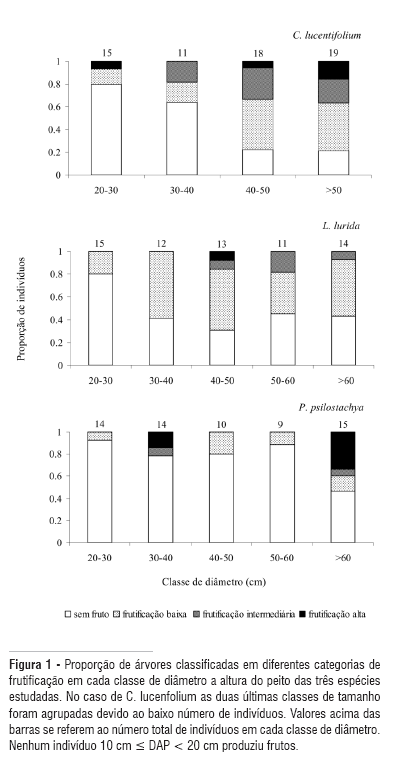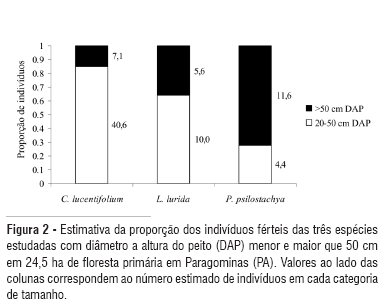Studies concerning the reproductive ecology of trees are important so as to better understand the impacts of logging and for the definition of guidelines to improve management practices. The aim of this study was to estimate (1) the number and proportion of reproductive individuals of Chrysophyllum lucentifolium subsp. pachycarpum, Lecythis lurida e Pseudopiptadenia psilostachya per size class, and (2) the impact of harvesting 90% of individuals > 50 cm dbh on the number of reproductive trees. We sampled 80 L. lurida, 76 P. psilostachya and 76 C. lucentifolium trees during one reproductive season. We estimated that 14.9% of all fertile individuals of C. lucentifolium, 35.9% of L. lurida and 72.4% of P. psilostachya were > 50 cm dbh in that year. Therefore, the harvest of 90% of these trees would cause a 13.4%, 32.6 %, and 65.2 % reduction in the number of fertile individuals of C. lucentifolium, L. lurida and P. psilostachya, respectively. If these proportions were stable over time, it would be necessary to keep 30% instead of 10% of individuals > 50 cm dbh in order to preserve half of the P. psilostachya fertile individuals. The results indicate that the effects of adopting a single minimum cutting diameter and of setting aside the same proportion of trees above that diameter on the proportion of remaining fertile individuals may vary by a factor of five among species.
Logging; Minimum cutting diameter; Reproductive ecology


